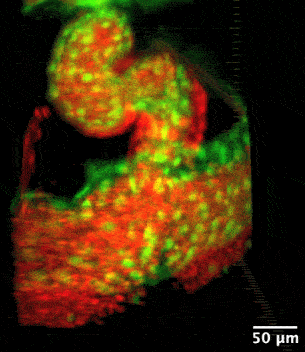Back • Return Home
Living Is Healing: Part 1 (02/15/2024)
We've touched upon a few interesting phenomena within Chemistry, as well as some associated models and theories from Physics and Biology that hint at the very basis of all life. However, the complexity of living organisms remains elusive.
For example, the human body is made up of trillions of "cells", smaller organisms that share in many of the same functions as the whole. Each cell responds to stimuli, digests food, and so on. They do this by means of "organelles", tiny clusters of chemicals that function like the much larger "organs" of which they are a part. A heart cell is to the heart, as the heart is to the entire human body.
The body is "multi-cellular", a community of cells. There are also "unicellular" or "single-celled" organisms, like "bacteria". The two types can also interact with one another, in both beneficial and harmful ways. For example, our bodies contain large populations of bacteria that help us to carry out all sorts of useful functions, but there are also "pathogenic bacteria" that can cause us sickness. It is likely that the latter take root when the former are compromised in some manner.
One idea within the hypothesis of Abiogenesis is that all of this complexity arose from the interaction of multiple Chemoton-like entities. Some began to absorb others, which eventually became the organelles of a kind of primitive cell. They were "symbiotic" in that they all worked together to help one another to survive. The biologist Lynn Margulis put forth the "Endosymbiotic Theory", which describes how some of the details of this process could have unfolded.
Generally, how cells function is still unclear. There are many ideas, but it seems there is little in the way of models that draw all of this information together into something coherent. It could be that our methods of observation are interfering with our ability to observe. With larger organisms, the difference between something that is "alive" and something that is "dead" might be obvious. What is less obvious is how rapidly things change with the onset of death, and how this can alter the structure of microorganisms that are less familiar. The work of Harold Hillman is particularly illuminating in this regard.
He noted how various practices used within Chemistry and Biology (such as "fractionation", "staining", and so on) affect samples. Further, some of the tools that we use to view those samples (e.g.: "electron microscopy") can only look at inert matter. In short, observing a live organism is quite different from dissecting a dead one.
[A video by Dr. Michael Weber of a two-day old zebrafish heart. The Nikon Small World Photomicrography Competition always has interesting images and videos!]
Tomorrow, we'll see if we can get a deeper understanding of the cell, and by extension, what makes something alive. Ciao for now.
← Leap Into The Past • Head Into The Future →

